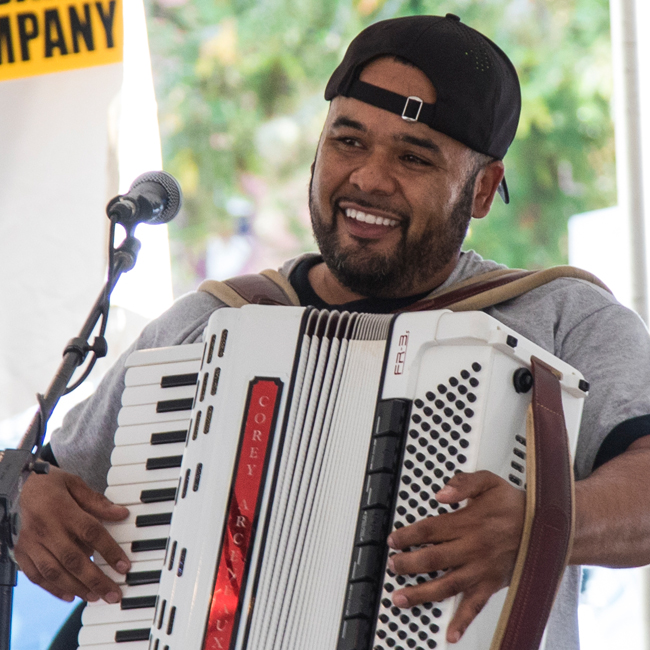Moving Forward

Colorful Signs Lead Way Into St. Landry History and Culture
“The Zydeco Cajun Prairie Byway illustrates the tale of our history from the Acadian settlers to all the people and cultures that have come to call the Cajun prairie lands their home.”
Louisiana Lieutenant Governor, Billy Nungesser
Large blue signs featuring an artist’s depiction of an accordion player will now guide visitors to hidden treasures in St. Landry Parish.
The signs mark the route of the 230-mile Zydeco Cajun Prairie Scenic Byway that winds through St. Landry and neighboring parishes. The state Office of Tourism and Department of Transportation and Development has unveiled some 200 new signs on the route that runs largely through back roads in what officials called “a big step forward in guiding motorists to places of cultural distinction.”
“The Zydeco Cajun Prairie Byway illustrates the tale of our history from the Acadian settlers to all the people and cultures that have come to call the Cajun prairie lands their home,” Lt. Gov. Billy Nungesser said. “It’s just one of the ways we can share our special heritage with visitors.” As Lieutenant Governor, Nungesser oversees the Louisiana Department of Culture, Recreation, and Tourism.
Doug Bourgeois, Executive Director of the Louisiana Trails and Byways program, which operates within the lieutenant governor’s office, said the signs are being placed strategically along the roadsides to guide motorists to significant Zydeco or Cajun cultural sites.
The Zydeco Cajun Prairie Byway is designed to provide tourists “easy navigation and enjoyment” as it leads them to dance halls, rice and crawfish fields, restaurants, museums, and other attractions, according to Celeste Gomez, Director of the St. Landry Tourist Commission.
Byway promotional material notes that visitors to communities along the byways, “can still hear Cajun and Creole French spoken in shops and on the street, take delight in our famous cuisine, and dance to rhythms that run through our very life.”
Byway travelers “will find architecture ranging from quaint Acadian cottages to gracious
antebellum mansions, relish the unforgettable experience of visiting the Atchafalaya Basin,” and find “some of the most beautiful surroundings imaginable,” according to the material. “Bayous shaded by moss-draped oaks, flooded rice fields glistening in the sun, and prairies ablaze with wildflowers create a feast for the eye.”
Gomez called the newly fashioned trail a “really smart” way to lure motorists off the main highways to enjoy sights and sites that might otherwise be bypassed. She said the new signs, which offer imagery of our traditional music, are more likely to catch the visitors’ eye than the old ones that featured a stylized motor vehicle.
According to the tourist commission website, the trail offers an opportunity to “learn about the genres of Cajun, swamp pop and zydeco,” and the byway “is the perfect way to experience the long standing traditions and culture found along the beautiful backroads of southwest Louisiana.”
Gomez said her office will distribute brochures and use a website and posters to promote the trail.
According to Bourgeois the byway is part of a federal program started in 1992 to mark historic roadside sites. Louisiana began to look at the program in the summer of 2005, when a University of New Orleans study suggested that it would help boost tourism in the state.
Hurricanes Katrina and Rita intervened before Louisiana could launch the program, and for the next few years state tourism promoters focused on “convincing people Louisiana was not still under water,” he said.
The byways program finally got on track about six years ago. There are now 17 designated byways statewide.
Opelousas, LA 5367I





